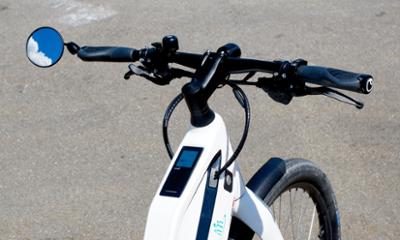

How do solar bicycles work?

Clean and environmentally friendly mobility models are becoming an increasingly important variable in the urban ecosystem. In this case, we are talking about a bicycle that is driven by clean energy, i.e. solar energy, through panels on the bicycle itself that increase its autonomy to a greater or lesser extent, depending on the model.
In terms of mobility, urban environments include more and more variables that are clean and environmentally friendly; those that are not no longer suitable for cities. Therefore, examples of sustainable transport are crucial, and this is where the bicycle comes into play.
A key role in the societies of the future
The bicycle is a form of transport with which we have coexisted for many years, and it is gradually being installed in large cities thanks to its ease of use and convenience. Moreover, local authorities are implementing plans for the development of adapted lanes and accessibility in public transport to achieve intermodality.
But in addition, some of the great advantages of cycling are that it saves time and money and does not produce pollutants, as we saw in the article on examples of sustainable transport.
Bicycles have also undergone and played a role in technological development. While in the past they were driven solely by human power, there are now bicycles with self-recharging solar panels that provide this vehicle with enough autonomy to travel up to approximately 100 kilometres.
The structure of these solar bicycles incorporates photovoltaic cells, which are capable of collecting the energy provided by the sun and light to power a battery that, by means of a motor, moves the bicycle by propelling the natural pedalling. The good thing about these bicycles is that you don't need to plug them into the mains to recharge them, as is the case with traditional electric bicycles. The downside, however, is having to move the excess weight of the solar panels. For this reason, these bicycles are made of carbon fibre to limit and optimise the weight of the frame and the various components as much as possible.
Types of solar bicycles
There are two types: those that incorporate the panels in the spokes of the wheel, and those that have them in the frame of the bicycle. Both types incorporate a battery that accumulates all the energy that is received and transmits it to the motor that moves the bicycle.
These bicycles, like cars with solar panels, are not very widespread in cities, but they are becoming ever more popular as an option to be taken into account. Above all, because they are a very competitive alternative to cover the short journeys in cities that can be made by motorbike or car.
Both options - solar cars, which we learned more about in the article on how these types of cars work, and solar bicycles - are becoming a complement to intermodal transport in cities: an option that combines different means to reach a final destination.
Debate on sustainable mobility
The fact is, as is being discussed in the Global Mobility Call and in the different presentations held at this event, transport is undergoing a process of change towards decarbonisation in all its elements. And the same is true of bicycles, which are an alternative that can include a complement to recharge their battery autonomously and not have to be plugged into the mains, which will save time and money.
Their ease of use and convenience in cities represents a truly interesting option, as shown in the study presented by Ineco "The Bicycle in the City", which discussed how, where and how much this means of transport is used. It is clear that the cities with the highest rate of bicycle use among the usual mobility options are those where there are more public bicycles per inhabitant. This is something that is on the increase in the plans of local authorities with regard to the implementation of public rental services.





